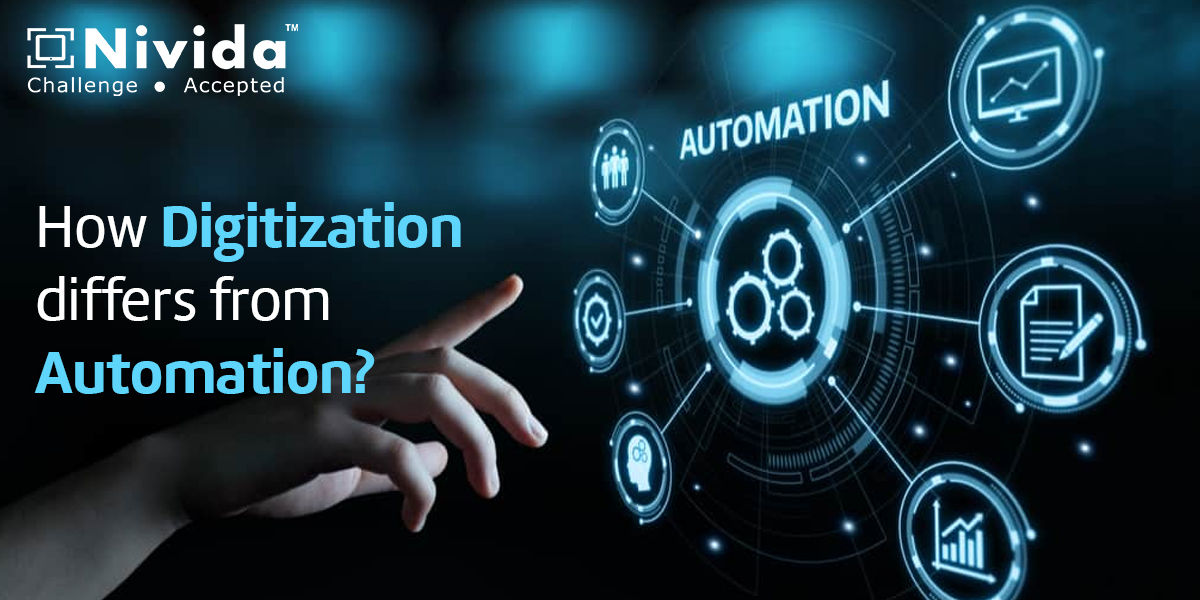A lot of people think of digitization and automation as usual corporate buzzwords, but they're more than that. If you want to obtain a competitive advantage, you need to focus on both of them. As a culture that is heavily reliant on technology, people expect businesses to keep up with the changing needs of their customers.
However, according to Forrester, 77% of organisations still use paper procedures, and 63% use Excel-like tools. This results in businesses having difficulty meeting consumer expectations for speed and ease. Organizations must speed up their digitization and automation initiatives to keep pace with the rapid pace of change to remain competitive. Explore these topics in further detail and see how they differ from one another!
Digitization v/s Automation:
Both "digitization" and "automation" seem similar, but they actually mean very distinct things.
The process of transforming a physical object into a digital one is referred to as Digitization. For instance, digitising patient records to produce electronic medical records is converting paper or physical records into a digital or electronic format that a computer can process. Before automation can take place, information must be digitised so that any automation system can process the data.
However, Automation enhances the existing services. When it comes to completing duties, it uses software and relies on the rules of business professionals to do so. Organizations may remain competitive as well as free up their staff to focus on value-added activities by automating chores such as sending clients reminders and customised discount codes, for example, using automation.
Digitize the business process:
A non-digital process is transformed into a digital one when it is digitalized. As a starting point, it entails moving away from paper storage and toward cloud-based data warehouses and minimising the number of physical sites. Let's say you work at a bank. Even depositing a paper check required customers to physically visit a location, stand in a queue, as well as engage with a teller only a few years ago. Because customers may now self-serve on their bank's website or app, banks have become significantly more efficient and customer-centric thanks to the digitisation of these transactions.
Digitization has the potential to both speed up and improves the accuracy of corporate processes. Additionally, digitising the R&D process has reduced human error and raised the possibility of achieving compliance standards, shortening market time. In addition, the digitization of drug development procedures has positioned life science firms for future automation.
Automate the business process:
To automate a business process, one must use technology to perform routine tasks in a predetermined order. Any procedure that was previously carried out by hand but is now carried out automatically falls under the umbrella of the term "automated." When automation is done correctly, employees can be freed up to work on more important business or creative tasks.
For example, the generation of recurrent reports is an everyday case in which a corporate process might be automated. In order for executives to stay informed, reports are critical, but middle management may struggle to synthesise all the information they get and offer a clear picture to their superiors.
Status reports can be entered into a centralised database and automatically consolidated rather than having employees manually type them and send them via email. As a result, middle managers will be able to analyse and convey their findings more effectively. Leadership may take more meaningful action with better and more regular inputs of business-critical information.
Every organisation needs a combination of Digitization and Automation:
It is easier to collect and store vital data and manage systems that help organisations satisfy client expectations when adopting digitalization. Automating monotonous operations frees up operational resources to focus on higher-value activities that benefit the company as a whole. By utilising cutting-edge technology like artificial intelligence, businesses can find new methods to optimise and personalise current automated processes, perhaps opening up new revenue streams or increasing consumer loyalty in the process.

